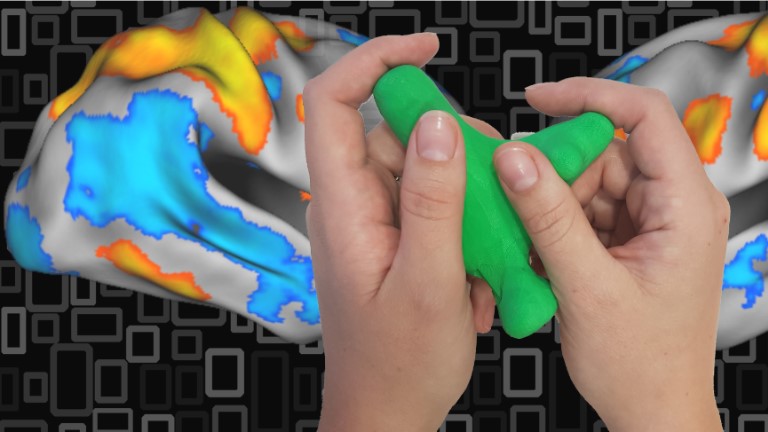
Neuronal plasticity:Where touch is as good as sight
Visual and tactile sensory systems use the same features to recognise a novel object
Have you ever wondered why you are able to recognise objects in your environment with both your sense of touch and your visual sense – even when only one of the two senses is available to you? Neuroscientists of the Collaborative Research Centre 874 (SFB 874) in Bochum have made this phenomenon the focus of their research. They devoted themselves to the question of why visual and tactile senses are interchangeable in certain areas. The findings of the study have now been published in the renowned journal eNeuro. They suggest that the same shape features are relevant for both the visual and the tactile sense and lead to a comparable perception of objects in both cases.
Two observations – made by the research team – were the starting point for the research. Firstly: that the absence of one of the two senses does not significantly disturb human perception. And secondly: that in everyday life the sense of sight and the sense of touch are automatically used instead of the other.
We came up with the question of how people can exchange different senses to interact with their environment.
First author Sepideh Tabrik, Neurologische Universitätsklinik und Poliklinik BG-Universitätsklinikum Bergmannsheil
And further: “Shape is a crucial feature for perceiving objects correctly. But while much is known neurologically about visual shape processing, there is less information about tactile shape processing.”
Novel 3D objects with natural object properties
The Bochum team chose an experimental setup involving “virtual reality (VR)”. In order to guarantee natural object properties and at the same time prevent falsifying memories of familiar objects in the test subjects, the scientists developed completely new 3D objects. On the one hand, these were designed to be in a naturalistic shape, but on the other hand, they were completely different and unexpected in their format.
Since active exploration plays an important role in shape processing, the test persons were immersed in a virtual reality environment during the visual tests, in which they could explore the 3D objects visually without using their sense of touch. Then, during the tactile procedure, the blindfolded participants actively felt a 3D-printed version of the same objects with both hands.
Concordant perception formed without any previous experience or memory
The researchers were able to show that both the visual and tactile exploration led to the formation of matching perceptions.
This result was particularly impressive due to the novelty of the object shapes for all participants. The concordant perception was formed without any previous experience or memory.
Prof. Dr Martin Tegenthoff, Director Neurologische Universitätsklinik und Poliklinik BG-Universitätsklinikum Bergmannsheil
“Furthermore, it was observed that both senses use similar features to perceive the object,” Tabrik adds. “This suggests that both senses might apply similar cognitive processes to represent shape information. This could explain why people can use different sensory types interchangeably.”
